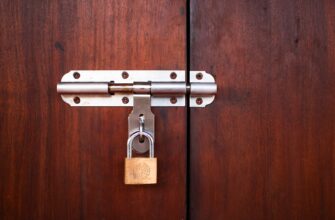🚀 USDT Mixer — Ultimate Privacy, Zero Hassle
Take full control of your USDT TRC20 transfers with our secure mixing service. 🧠
No registration. No personal data. Just clean, private transactions 24/7. 🌐
Transparent fees starting from only 0.5%.
- Why Private Key Security Is Non-Negotiable
- Step 1: Never Store Keys in Plain Text
- Step 2: Use Hardware Wallets for Active Funds
- Step 3: Implement Multi-Signature Protection
- Step 4: Create Physical Backups with Fire/Water Resistance
- Step 5: Secure Digital Backups with Encryption
- Step 6: Isolate Keys from Internet-Connected Devices
- Step 7: Implement Environmental Safeguards
- Step 8: Conduct Regular Security Audits
- Step 9: Avoid Common Social Engineering Traps
- Step 10: Maintain Operational Discipline
- Frequently Asked Questions
Why Private Key Security Is Non-Negotiable
Your private key is the ultimate gateway to your cryptocurrency holdings—a unique cryptographic string that proves ownership of digital assets. Unlike traditional bank accounts, crypto transactions are irreversible. If hackers steal your private key, they gain complete control over your funds with zero recourse. This guide delivers a battle-tested, step-by-step approach to shield your keys from cybercriminals.
Step 1: Never Store Keys in Plain Text
Digital exposure is hackers’ primary attack vector. Avoid these common mistakes:
- Text files on your computer or cloud storage
- Screenshots in your phone gallery
- Email drafts or messaging apps
- Pasting into unsecured notes apps
Solution: Always encrypt keys before digital storage using AES-256 encryption tools like VeraCrypt.
Step 2: Use Hardware Wallets for Active Funds
Hardware wallets (cold wallets) store keys offline in hack-resistant devices. Top options include:
- Ledger Nano X: Bluetooth-enabled with mobile support
- Trezor Model T: Touchscreen interface with open-source firmware
- Coldcard: Air-gapped operation for maximum isolation
Always purchase directly from manufacturers to avoid supply-chain tampering.
Step 3: Implement Multi-Signature Protection
Multi-sig requires 2-3 approvals for transactions. Setup process:
- Choose a multi-sig wallet (e.g., Casa, Electrum)
- Distribute key segments across physical locations
- Require confirmation from separate devices
This ensures no single compromised device grants full access.
Step 4: Create Physical Backups with Fire/Water Resistance
Offline storage prevents remote hacking. Best practices:
- Stamp keys onto stainless steel plates (e.g., Cryptosteel)
- Store in bank safety deposit boxes
- Use tamper-evident bags for physical copies
- Never store complete key phrases in one location
Step 5: Secure Digital Backups with Encryption
When digital storage is unavoidable:
- Encrypt keys using GPG or 7-Zip with AES-256
- Store encrypted files on password-manager vaults (Bitwarden/KeePass)
- Enable two-factor authentication on all storage accounts
- Never name files obviously (e.g., “crypto_keys.txt”)
Step 6: Isolate Keys from Internet-Connected Devices
Air-gapped security measures:
- Dedicate a offline computer for key generation
- Use Tails OS on USB drives for temporary sessions
- Transfer data via QR codes instead of USB connections
- Disable Wi-Fi/Bluetooth during key management
Step 7: Implement Environmental Safeguards
Protect against physical threats:
- Install hidden safes bolted to concrete
- Use decoy wallets with minimal funds
- Never discuss holdings publicly
- Cover webcams during key management
Step 8: Conduct Regular Security Audits
Quarterly checklist:
- Verify physical backup integrity
- Update all wallet firmware
- Rotate encryption passwords
- Test restoration from backups
Step 9: Avoid Common Social Engineering Traps
Hackers use psychological manipulation. Red flags:
- “Urgent” security alerts requesting keys
- Fake wallet updates requiring seed phrases
- Impersonation of support staff via DM
- Too-good-to-be-true airdrops
Step 10: Maintain Operational Discipline
Final protective habits:
- Never type keys—use copy/paste in encrypted environments
- Wipe device history after transactions
- Use separate devices for trading vs. storage
- Destroy paper backups after transferring to metal
Frequently Asked Questions
Q: Can I store private keys in password managers?
A: Only encrypted fragments—never complete keys. Use offline password managers like KeePassXC with key files.
Q: Are biometric locks sufficient for phone wallets?
A: No—biometrics can be bypassed. Always combine with hardware authentication.
Q: How often should I rotate private keys?
A: Only when compromise is suspected. Transfer funds to a new wallet rather than changing existing keys.
Q: Can firewalls protect my keys?
A: Firewalls defend against network intrusions but won’t stop malware logging keystrokes. Combine with hardware isolation.
Q: Is cloud encryption safe for backups?
A: Only if you control encryption keys (client-side encryption). Avoid services where providers hold decryption keys.
Implementing these steps creates layered security—making it exponentially harder for hackers to access your private keys. Remember: In crypto, you are your own bank. Treat key storage with the seriousness of a financial institution’s vault system.
🚀 USDT Mixer — Ultimate Privacy, Zero Hassle
Take full control of your USDT TRC20 transfers with our secure mixing service. 🧠
No registration. No personal data. Just clean, private transactions 24/7. 🌐
Transparent fees starting from only 0.5%.








